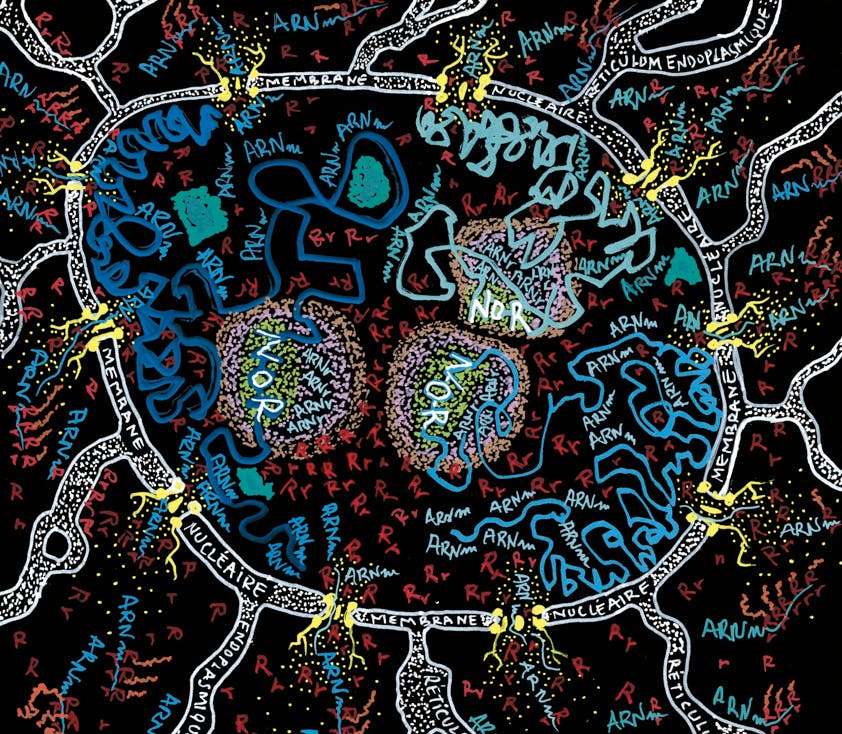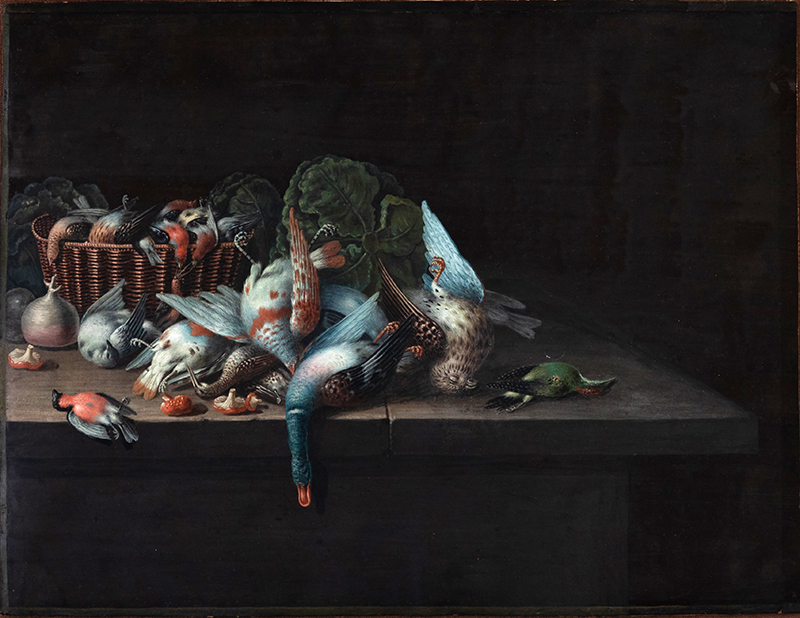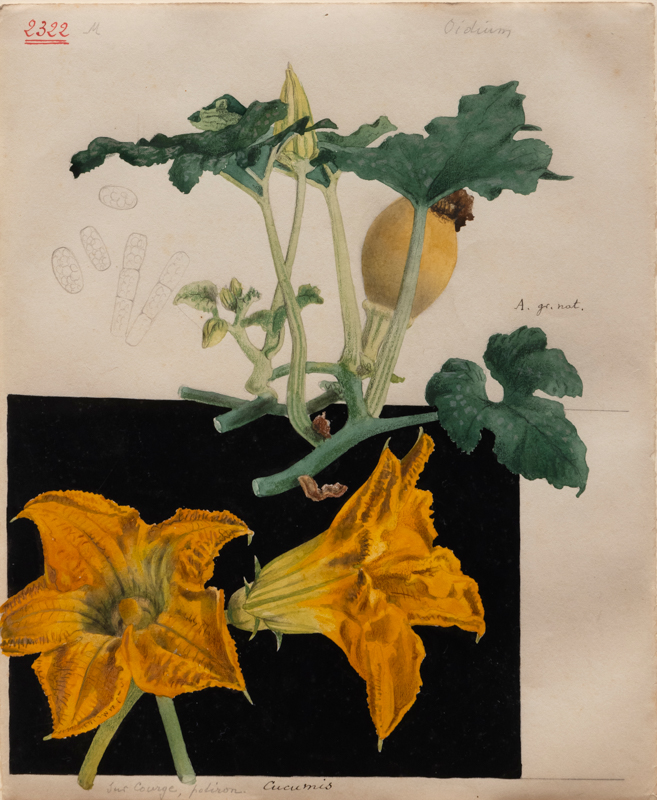The Cell Takes Center Stage on the Upper East Side in a New Show That Paints Science as an Art
Careful renderings of plankton and flora demand attention and provide pleasure that is anything but microscopic.

‘Christian Sardet: Drawings by a Biologist About the Origin and Evolution of Life’
‘Drawn From Science’
Victoria Munroe Fine Art, 67 E. 80th Street #2
January 26-March 9
A pair of shows at Victoria Munroe Fine Art, on Manhattan’s Upper East Side, serve as an eloquent refutation of the division of the brain into right and left sides. “Drawn From Science” and “Christian Sardet: Drawings by a Biologist About the Origin and Evolution of Life” are both gatherings of artistic science, or scientific art, and it hardly makes a difference which. A discerning eye, a curious mind, and a sure hand are boons to both.
The conjoined shows span centuries. The farthest point back are pictures by a Nuremberg artist of the 18th century, Barbara Regina Dietzsch. She worked with gouache on vellum, and her stems and petals pop into arresting focus against a bottomless black background. Her near contemporary, Mary Delany, also on display, writes of herself that she “invented a new way of imitating flowers,” a style of textured collage that makes her flowers feel pluckable.
Dietzsch’s “Still Life With Game and Exotic Birds” is a lustrous work. Its birds, with their necks wrung and their feathers an electric blue, are arranged in a posthumous cornucopia. The fowl are no longer alive, but they are not yet food — they are yet to be plucked and cooked. The artist captures them in a lovely languor. It is the stillness after the slaughter. One hangs off the table, about to fall from the frame.

A higher craft is achieved in the watercolors of Commandant Julien Lignier, a career officer of the French military who began as an enlisted man and was named a chevalier of the Legion of Honor for fighting the Germans in World War I. He set aside the gun for the brush after leaving the battlefield, and his renderings of flowers and their diseases combine the taxonomic bent of a Linnaeus with an artist’s intuition for background and geometry.
“Bean” is presented with the nighttime beauty of purple layered on black, the subject floating against a backdrop that is as colorless and fathomless as deep space. Lignier’s leap is to isolate these beans from the earth and soil, and to transpose the microscope’s capacity to dilate and capture to ink and paper. There is a sense of the telescope’s technique, too, in that Lignier is showing the viewer something up close that would customarily be out of sight.
“Cucumber” utilizes a black square set against neutral paper to surface glorious yellow petals, seen directly and in profile. The drawing refuses the viewer’s expectations of a full cuke, and instead shows the piping that gives the crunch. Stems of various thickness convey an infrastructure that is hidden to all beside the growers. The drawing insists that this is a cucumber, in the same way that an X-ray of our innards would be the truest autobiography.

The biologist Christian Sardet, the founder of the Laboratory of Cell and Development Biology at the Marine Station of Villefranche-sur-Mer, has for years channeled his expertise — he has been awarded the Grand Prix des Sciences de la Mer — into acrylic drawings on black paper. In a note accompanying the exhibit, he explains that “each composition reflects an event in the life of cells.” They land with the psychedelic weirdness of life in its quick.
“Division” shows the cell coming apart, but it could double as a map of the world after the crumbling of Pangea. Jagged shapes are captured in all of their angular breaking, shattered shards of a whole that promise new combinations to come. “Future of Life” summons a complex grid, like a sentient mainframe or a living map. “A World of Protists” suggests that each living thing is a paraphrase of a bewilderingly diverse microbial citizens.
More menacing are “AIDS Virus” and “Covid Virus,” drawn in burning reds and bright blues and greens. There is something chilling about viewing these viral villains in all of their minutiae. The scale of the suffering they precipitated is so large, their particular personalities so minuscule. Their awfulness is anything but abstract. Seeing the subject, though — for the artist and the scientist — is the first step toward immunity, and illumination.

